Leeds confirmed their return to the Premier League under Marcelo Bielsa in what was a fantastic 2019/20 campaign having won the Championship. A crucial player in their success was Ben White, who was brought in from Brighton and Hove Albion on loan. The 22-year-old has had an incredible journey through England’s top-flight divisions starting with loans at Newport County in League Two and then joining Peterborough United in League One in the previous season.
Now, following his superb performances and contribution to Leeds’ title win, White is ready to bring a huge contribution for a Premier League side, whether that be for Brighton or for top clubs like Liverpool and Arsenal who are interested in his signature. White not only has put Premier League sides on notice but has also caught the eye of the England national team with an international appearance in the near future looking more and more likely. This tactical analysis will showcase White’s all-around game and what makes him a great defensive talent with tremendous potential.
Physical profile
Centre-backs in the modern day are required to be quite complete especially at the top level and a good physical profile will help defenders massively in an era of football that is quite reliant on physical qualities. At 6ft, White is a small centre back and it proves to be a weakness. He ranks 81st in the Championship in aerial duels per game with 4.87 attempted per game. His success rate of 54.55% is also below par with defenders with elite aerial ability averaging a success rate of more than 65%.
However, this is really his only weakness in this department. His height does mean he is relatively quick for a centre-back. He does not possess great recovery speed but he rarely needs this, given his ability to move into good starting positions in the defensive phase. At 72kg, he is not big in terms of muscle but this does allow him to be quite agile and quick on his feet. His agility on his feet gives him good lateral speed and movement, which is important for defenders as they need to be able to change direction quickly.
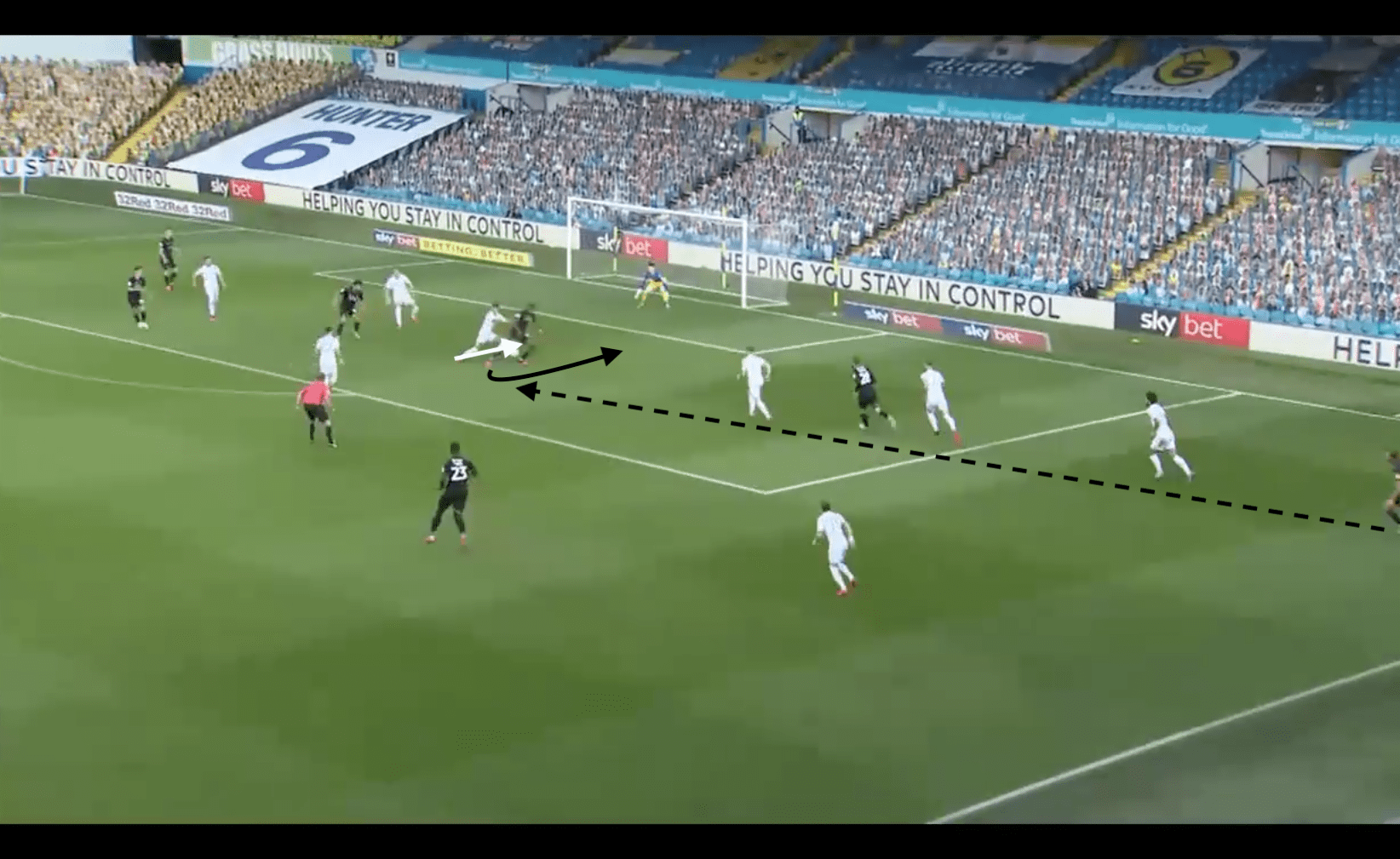
In this example against Charlton Athletic, the low cross is found by the Charlton forward who takes a great touch into the middle, selling White in the process with a drop of the shoulder. While it looks like the striker will have a clear chance at goal, the Englishman is able to block the attempt as he was able to close down the distance the striker gained with just a couple of strides. This stopped a clear opportunity on goal, which highlights the importance of a centre-backs’ agility.
Despite his relatively small size, he is a very strong defender, which comes up in the numbers. He ranks a very impressive 2nd in the Championship for defensive duels per game at 9.22 and boasts an incredible 71.62% win percentage. A number above 70% is the benchmark for elite players so White is in good company here. Of course, to win duels there has to be astute knowledge in positioning and awareness of the opposition, which White does have in abundance.
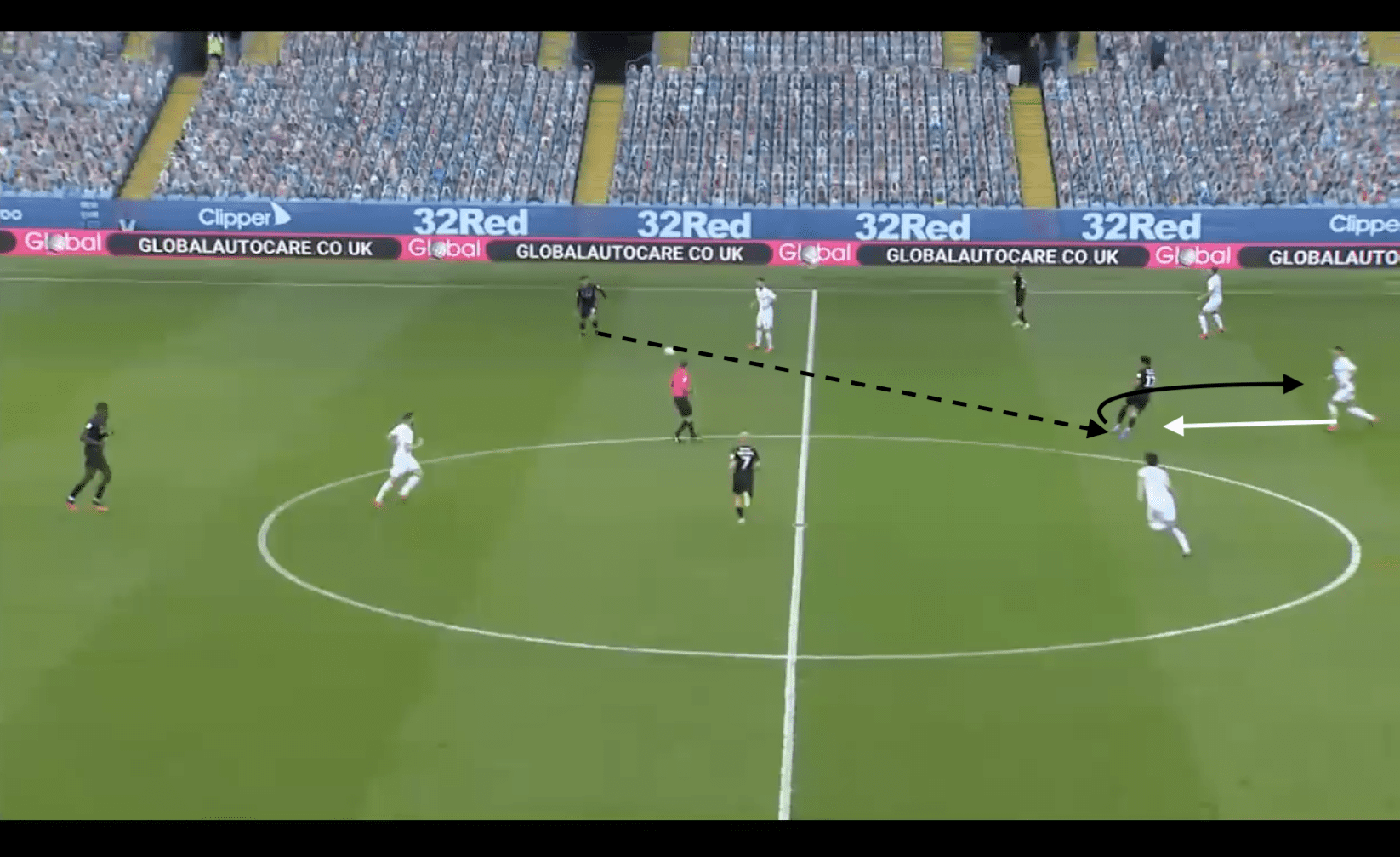
In the same game, he showcased a combination of his strength and awareness in the example above. The pass is played into the Charlton attacker, who is looking to beat White to the ball. The 22-year-old recognises this and knows he has to get to the ball before the attacker can control otherwise he could be in on goal. As the pass reaches the attacker, White easily outmuscles the attacker before dribbling with the ball past another Charlton player, an action that we will touch on later. The ease in which he does this is very impressive but there are several times that he concedes a foul when doing this. He can sometimes apply too much force and his eagerness to win the ball high up can give the foul away. However, for teams that play a high line like Leeds, these are fouls that are encouraged as it stops counter-attacks and buys the defence time, so this action is essentially a win-win for White.
Having looked at his physical profile and some of the attributes that make White tick defensively, we are now going to look at his whole defensive game.
Defensive quality
We have already touched on his strength as well as his awareness but there are some areas that we still need to look at. We mentioned earlier, White’s height can be a problem as he can’t dominate the aerial battle. To make up for this, he has other physical qualities but another huge trait that he requires is great positioning, game intelligence and his ability in challenges to help stabilise Leeds’ defence. Given that Leeds play a high line, it’s usually up to White and his other centre-back partner or partners to stop the opposition from counter-attacking. While in a previous example, he was able to do this by outmuscling a player, there are situations that require a different action.
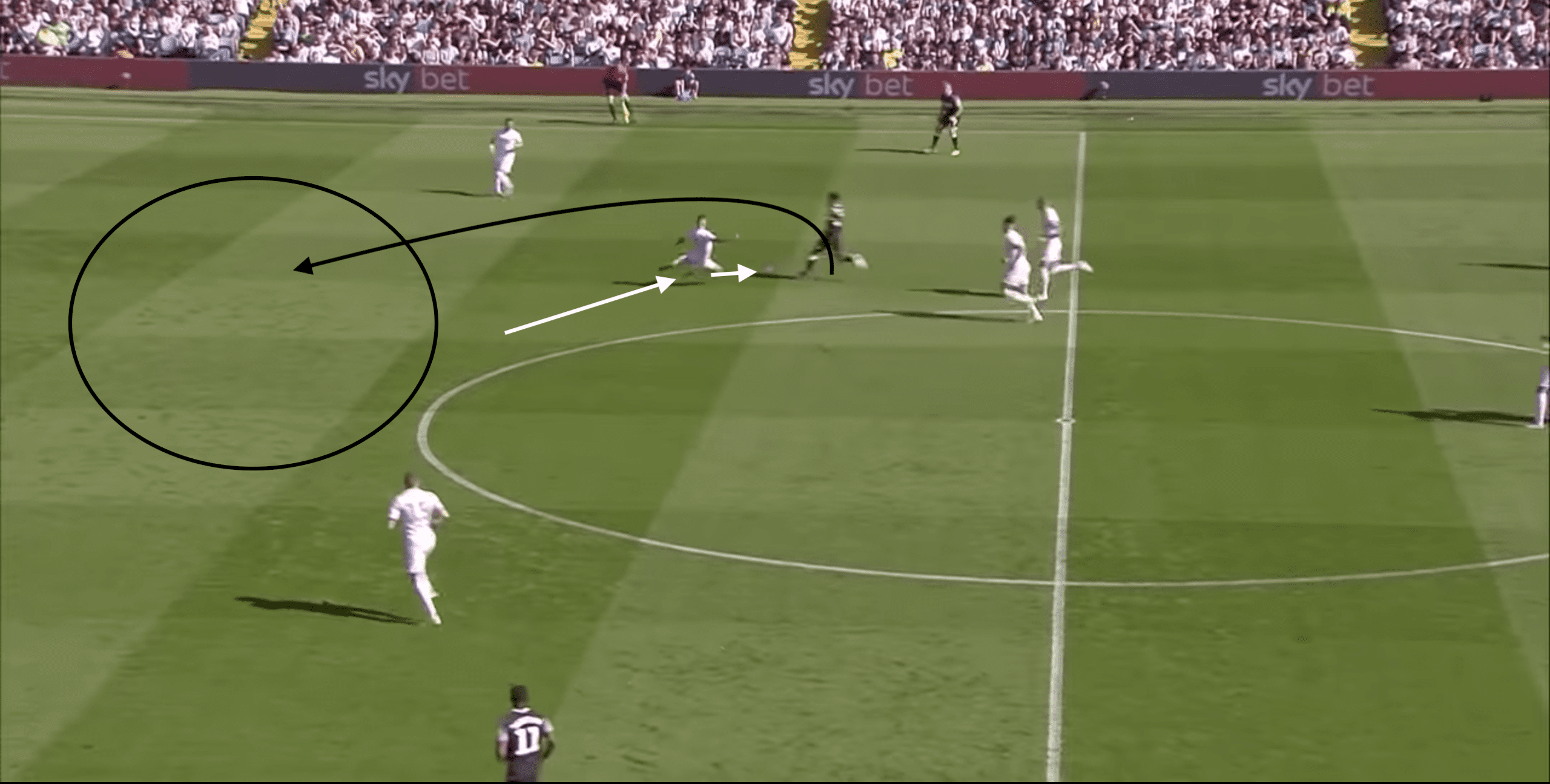
In the example above, White has to put in a tackle to win the ball back high as the opposition were able to bypass Leeds’ press. The attacker is looking to run into huge space behind White, so it’s imperative for White to win the ball. The centre-back flies in to make a sliding challenge. The image doesn’t quite capture the technique, but it is very good. Despite charging into the challenge, he remains controlled. He slides in with his right leg with the foot hooked behind so the studs aren’t high. This allows him to hook the ball with his left and the choice of using his left foot is important. This is because he is able to rotate his left leg much easier than his right since the attacker is trying to beat White by passing his left leg.
His comfort in making this kind of challenge is quite surprising given that he only attempts 0.54 slide tackles per game. His success rate of 60% is impressive, which given his great technique, should not be as surprising. The lack of slide tackles is also a positive as it means he is rarely in a position to make last-ditch challenges.
This great positioning is shown by the 4.15 interceptions that White averages per 90 minutes, which is an incredibly high number. Some of this is down to the role he plays and the tactics of Bielsa but it does also speak to White’s intelligence. In this example below against Swansea City, you can see White’s intelligence in terms of his positioning and decision making.
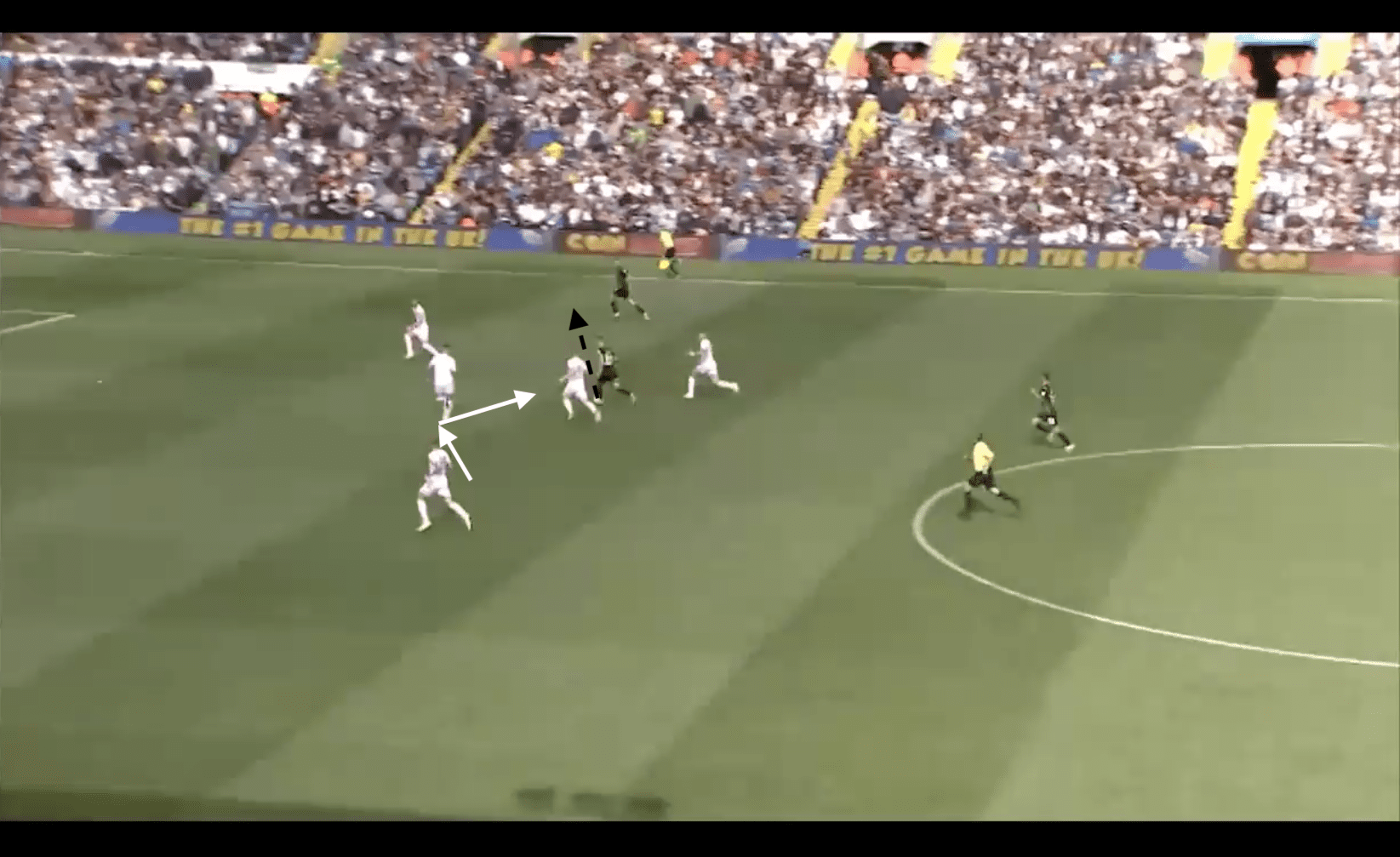
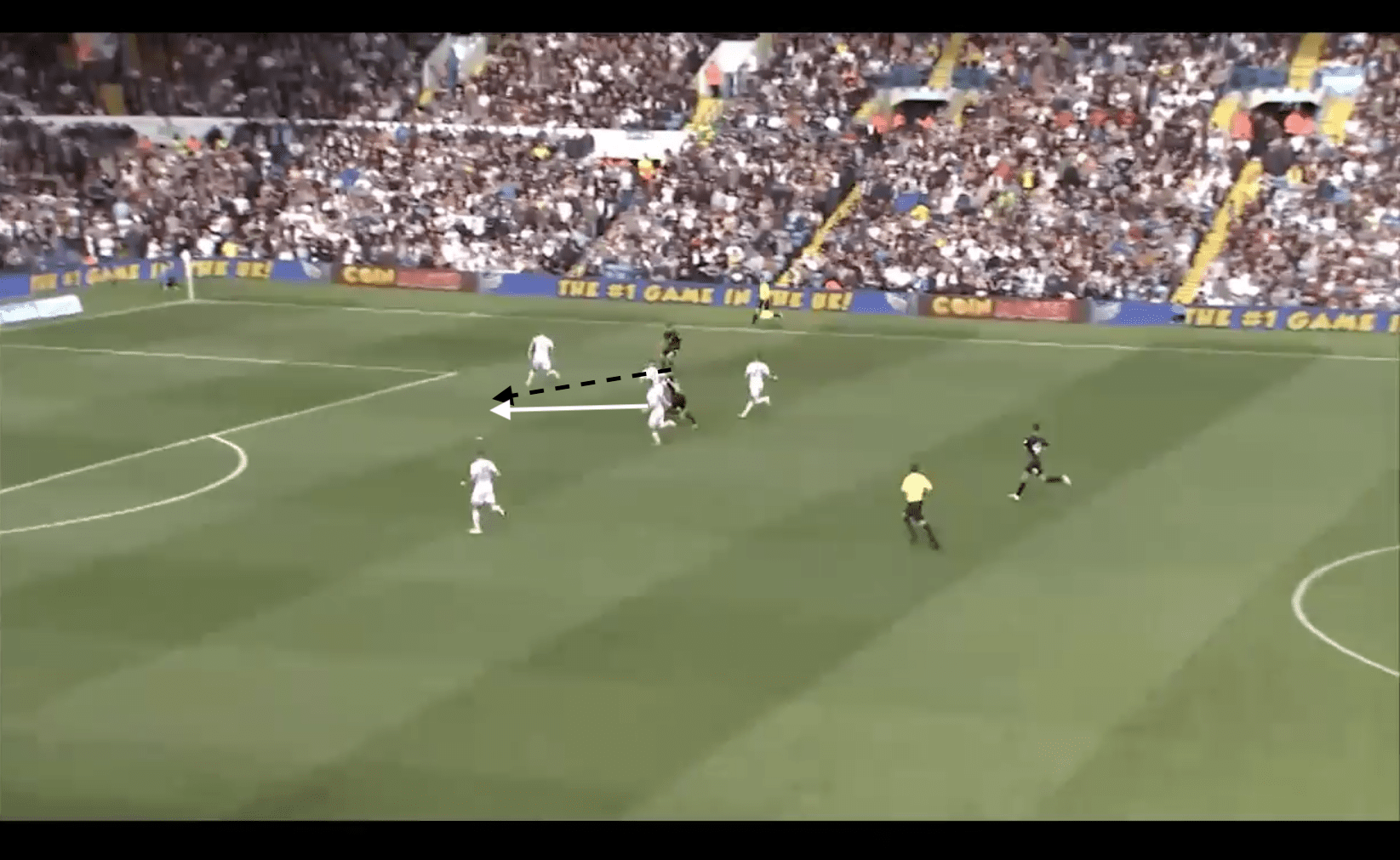
The first picture shows White acting as a help defender. The Englishman helps his defensive partner by doubling up on the attacker in possession. This is so that either he can win the ball back or force the attacker into passing to his teammate on the right. The outcome is the latter while the second picture shows the attacker’s teammate in possession of the ball. White forced the pass well but kept the Swansea attacker behind him. This is because he knew that the only option for the player in possession was to play a pass. In the end, this is what happens and White is able to intercept the pass and Leeds regain possession. It’s a relatively simple action but he remained a couple of steps in front of the Swansea attackers so that Leeds could win possession back and stop the opposition attack. Simple actions done on a consistent basis to a high standard is what makes a great defender and White does this well.
White’s defensive game is very strong and rarely makes any mistakes but he plays a role in Leeds’ build-up play as well. We are now going to look at how White’s skillset in this area helps Leeds build-up from the back.
Ball playing and dribbling
As mentioned earlier, defenders in the modern day have to be near complete but that’s not just on the defensive end. Elite teams play a heavy-based possession style with a high defensive line and a high press. In order for this to function well, defenders are required to be technically proficient, something White is capable of doing. His passing range is fantastic but it’s his proficient passing ability that has made him important to Bielsa’s Leeds. He averaged 7.51 progressive passes from defence with a total distance of 306.46 metres per game, which are impressive statistics.
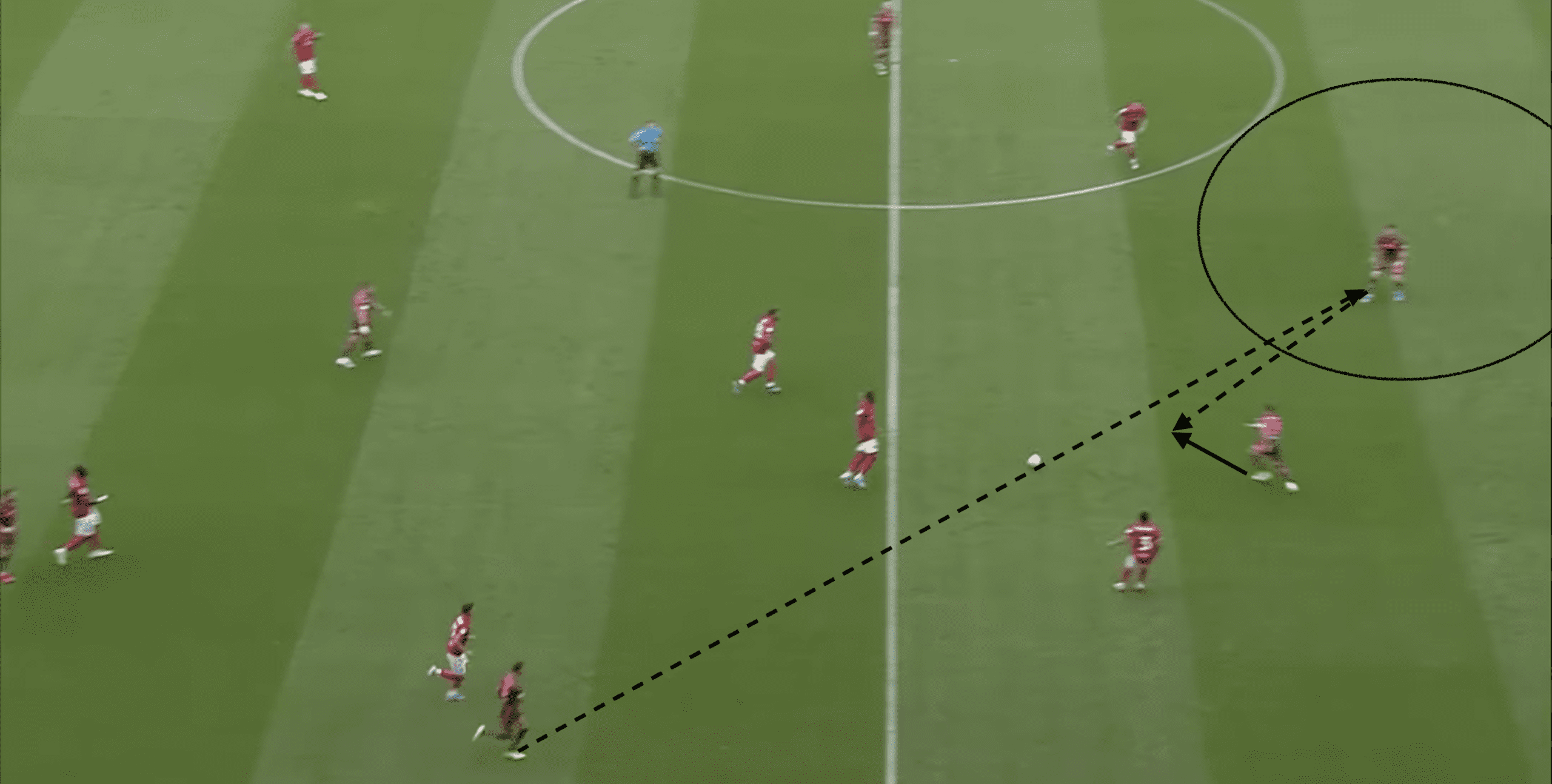
In this example above, we can see an example of White’s progressive passing ability. Prior to this image, White was able to escape out of pressure after winning the ball back using his dribbling skill, something we will touch on later. He then sees his teammate in space before firing in a low driven diagonal pass into his feet. The attacker lays it off to a fellow forward and Leeds are able to build an attack. Leeds’ tactical set-up allows vertical and diagonal passes for better build-up. The team were able to build an attack just a couple of seconds after regaining possession due to White’s passing ability.
The 22-year-old can not only play vertical passes into open teammates but he is a threat from the backline. He can make passes that bypass the whole midfield to set up the likes of Patrick Bamford as his long passing is fantastic also. This chart below showcases this quite well but also shows his ability to step up into the midfield with the ball as well. The progressive passes are shown by white arrows and the progressive runs are shown by black arrows.
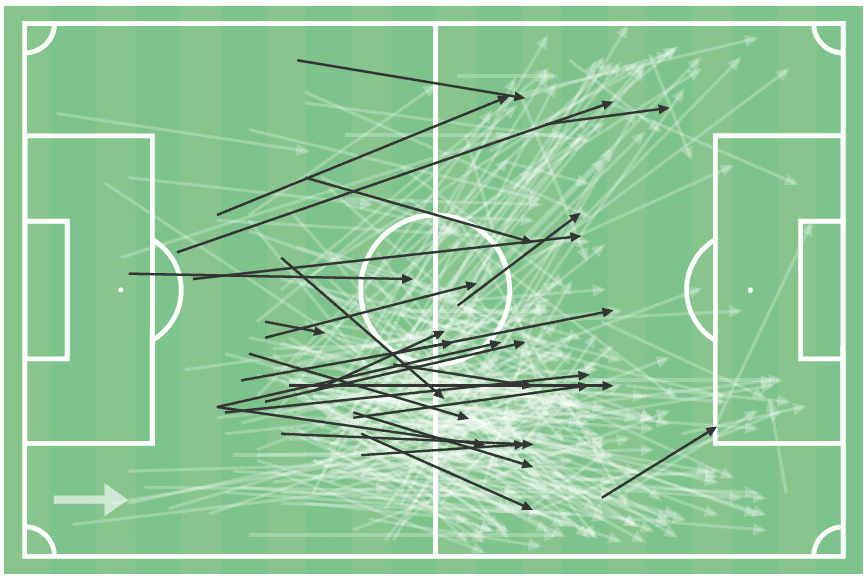
His progressive running from defence is superb and ranks 11th in the league, with his 0.79 dribbles per game ranked 10th. He completes 64.1% of his dribbles, which is superb but the number of dribbles he takes is so little that the success rate is a footnote. A lot of his drives into midfield don’t count as dribbles since he usually drives into open space. An example of this can be seen below.
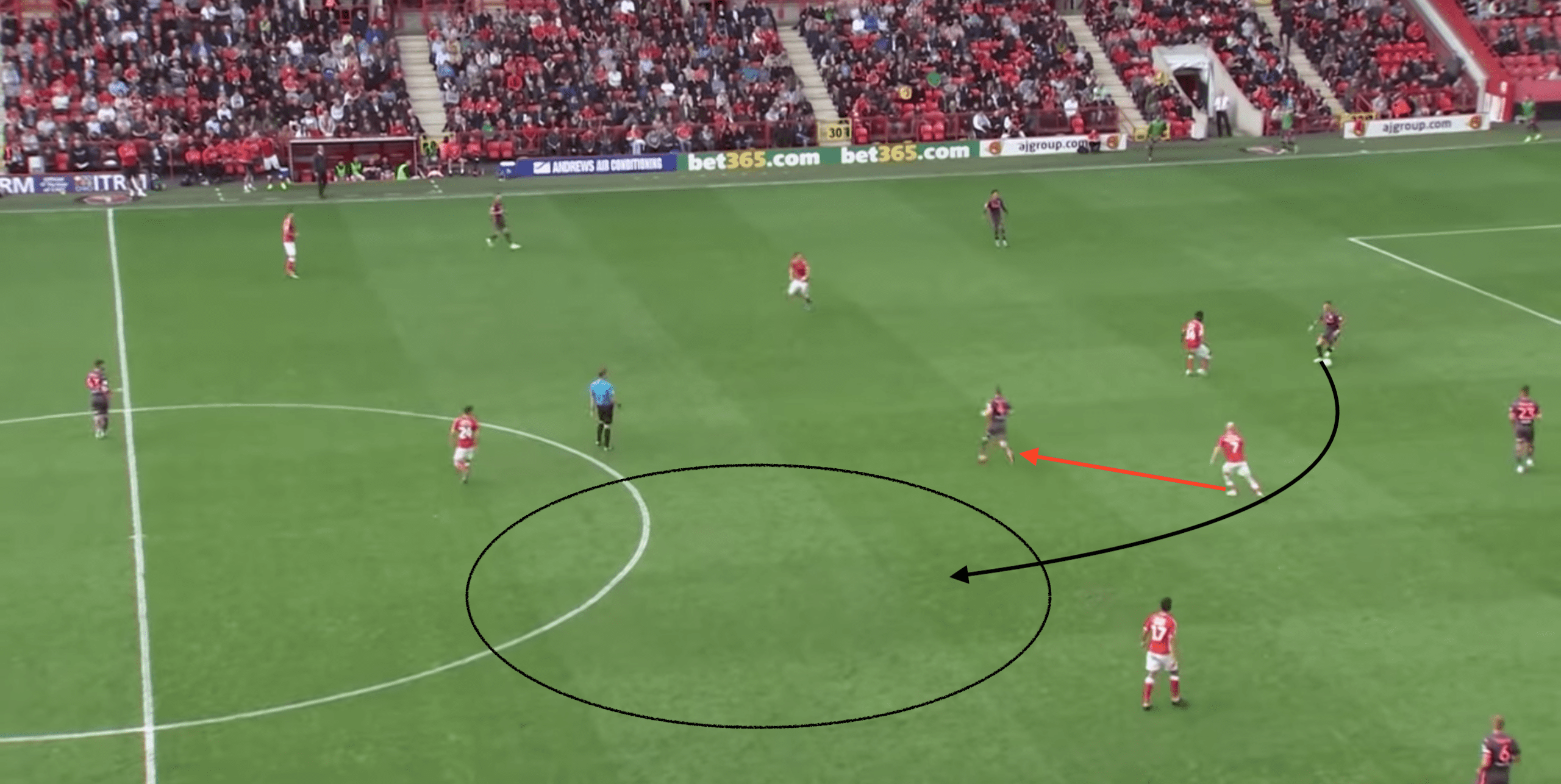
Here, White is on the ball and drops his shoulder to look to dribble with the ball to his left. The opposition number 7 realises this and looks to close a passing option in Adam Forshaw. This leaves a clear path for White to run into the space in the middle of the pitch. He is so comfortable with the ball, he brings the ball all the way to the centre circle before finding a teammate in the left half-space. While that doesn’t count as a dribble, it still shows how White can help progress the play just by bringing the ball up into the midfield. There are plenty of examples of White’s close control as he does like to drop his shoulder and move into space or he just uses his body and acceleration to get past players. Either way, his composure in dribbling in open space or against opposition is a valuable asset as it can help White get out of trouble or progress the play in a different manner.
Final remarks
This scout report hopefully shows that Ben White is already a talented defender who can be a great asset in a possession-based side. There are no gaping holes in his game and at 22, that is huge and highlights the potential that White has. With a year in the Premier League looking extremely likely, he can prove to be a standout defender in his debut season in the league and can also showcase his quality for Gareth Southgate ahead of the 2021 European Championships. With defenders more likely to excel after the age of 27, White could prove to be an exception as he has shown he has the necessary tools to succeed at the highest level under a tactical but demanding manager in Marcelo Bielsa.

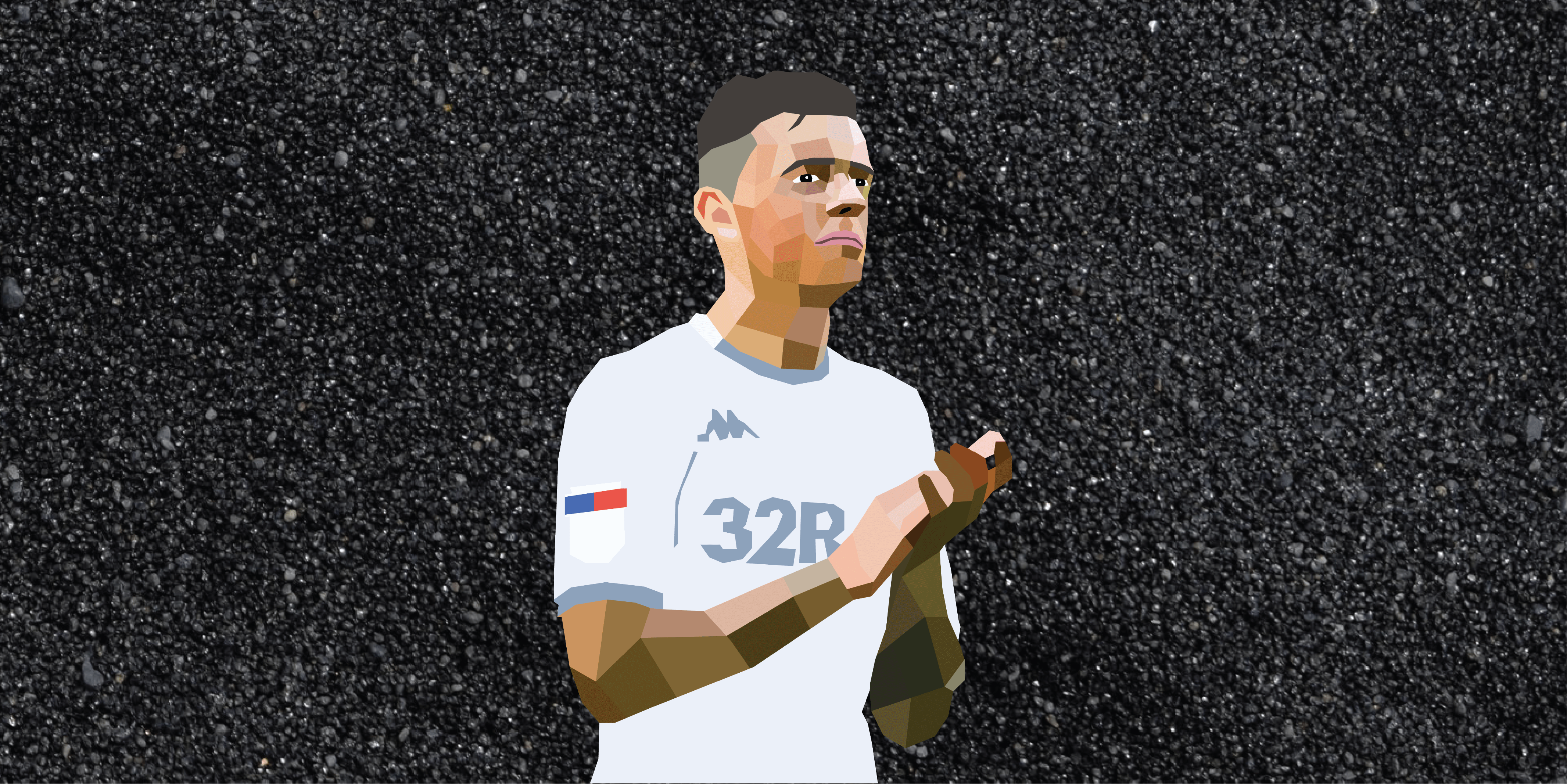



Comments